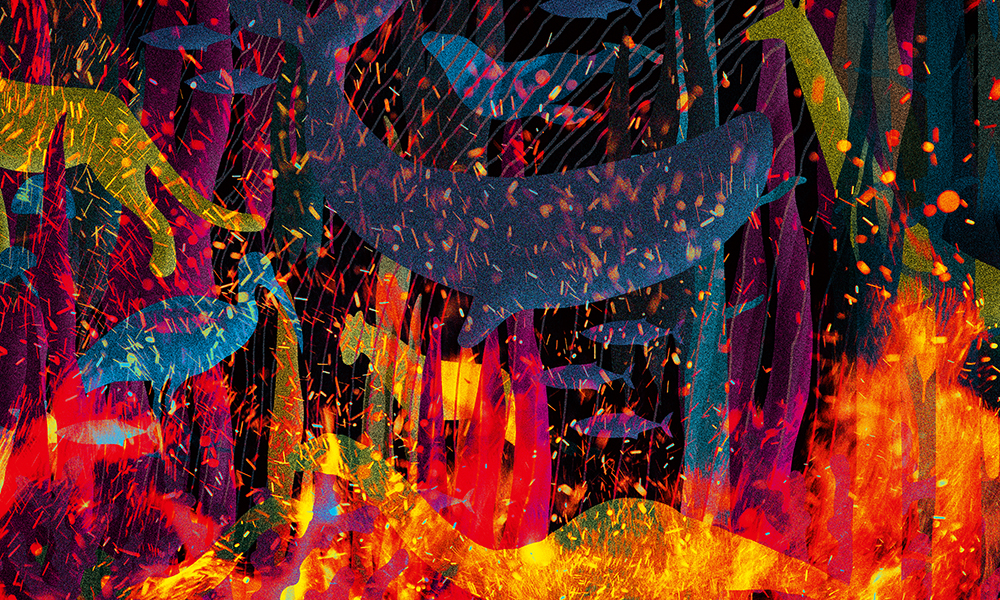
Dinosaurs, dodos, and the future of life on Earth
Our planet has experienced five mass extinctions – are we in the midst of a sixth? Ahead of his appearance at EMBL’s Science and Society Conference, palaeontologist Mike Benton explains how looking into the deep past can give us vital insights into the future of life on Earth

Palaeontologists have studied mass extinctions for over 50 years, developing knowledge about the way global environments have changed and the impact that this has had on life.
The work of Mike Benton, a professor of palaeontology at the University of Bristol, UK, has been at the heart of transforming palaeobiology from a speculative subject into testable science. As the scale of global climate change emerges, along with its impact on life on Earth, palaeontologists’ understanding of past extinction events has come to the fore.
In part, Mike’s work builds on the climate models that have been developed for use in the present. “Now that we have functioning climate models for the present day that capture at least some of the complexity of the way the world works, we can use them to look at the effects of small-scale historical changes in climate,” he explains. “Take the aridification of North Africa since Roman times as one example. We can look at what that meant for movements of wildlife. We know that there were hippos and ostriches in Egypt a thousand years ago, and that they aren’t there any more. That’s the kind of thing we can track.”
Mike’s work is also able to harness a similar approach to delve much further into the past. “We can go deeper in time. We use the same approaches that we know work in the present day. We’re careful to constantly road-test the models against the present day, and ensure they’re making reasonable predictions. Then we apply them to the past.”
Exploring the history of biodiversity fluctuations on Earth means harnessing the latest technology. Advances in computational approaches and data accessibility have allowed the creation of far more sophisticated models. “The precision of what we can do is getting better all the time, meaning that the error bars are getting smaller,” says Mike. “An obvious example of this is the dating of rocks. When I started out many years ago, dating rocks involved an error bar of plus or minus five per cent, even 10 per cent. Now in some cases it’s plus or minus a fraction of one per cent, which is pretty amazing. We can also take many more measurements from the rocks, for example chemical measurements like the abundance of isotopes of oxygen and carbon, which can tell us much more about climates and atmospheres. We can be much more confident in the quality of the data now.”
As a result, gaps in our knowledge are being bridged, and a clearer picture is emerging. “Many people are familiar with the extinction of the moas, and of course the dodo. But what we’re looking at is potential events over the next few centuries that are much bigger and more serious than anything like that. It’s something quite different from the extinction of the dodo, or a few species here and there. What we’re looking at is losses of tens of per cent. Perhaps thirty, forty, fifty per cent of biodiversity. It’s by looking back at the deep time mass extinctions that we can find sources of data that allow us to project into the future.”
In November, Mike will speak at EMBL’s Science and Society Conference, ‘Our House is Burning: Scientific and Societal Responses to Mass Extinction’. At the conference, the impact of environmental changes on biodiversity will be on the agenda. The conference will also bring together campaigners and will explore different types of activism and political strategies. Given the kind of insight his work provides, how does Mike see himself? “I’m a scientist, and your job as a scientist is to test hypotheses and to present the results in as clear a way as possible, all the time being aware that your work is rightly subject to criticism. But a lot of what I’m doing, and what a lot of palaeontologists are doing, is definitely feeding a particular view, which is broadly based on good science.” The second day of the EMBL conference includes panel discussions aimed at exploring the scientific, societal, and technological responses to mass extinctions.
In the public debate on climate change, some highlight that extinction is a natural part of life on Earth, bringing little cause for concern, especially given that biodiversity on Earth today may be at record levels. But Mike is clear that there is a marked difference between what we might expect in the normal course of events, and the rate of extinction being recorded now. “It’s completely true to say: ‘extinction is normal’. Most species last for one or two million years. That means that, in the long history of life, more species will have died out than are currently in existence on Earth, even though biodiversity on Earth now may be at its highest ever level. Sometimes people quote those two points and then say, ‘so, why worry?’ Well, there is a big difference. The rate of extinction at the moment is between a hundred and a thousand times higher than it ought to be. The rate and volume of extinction at the moment is right up there with a mass extinction.”
The 21st EMBL Science and Society Conference will consider the impact of environmental changes on biodiversity, ecosystem services, and human well-being. It will also focus on potential solutions and types of action: from activism to political strategies, and from local grass-roots conservation groups to global youth movements. It will also evaluate the application of various targeted intervention methods across data science, emerging technologies, sustainability solutions, and beyond.
To find out more and to register, click here


